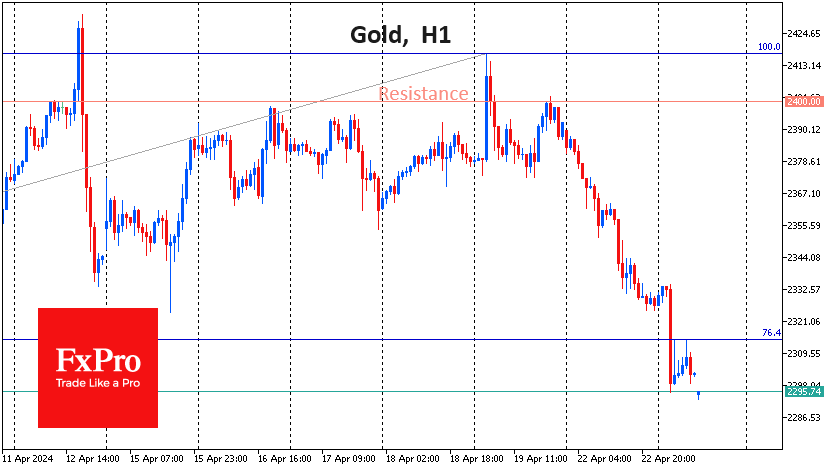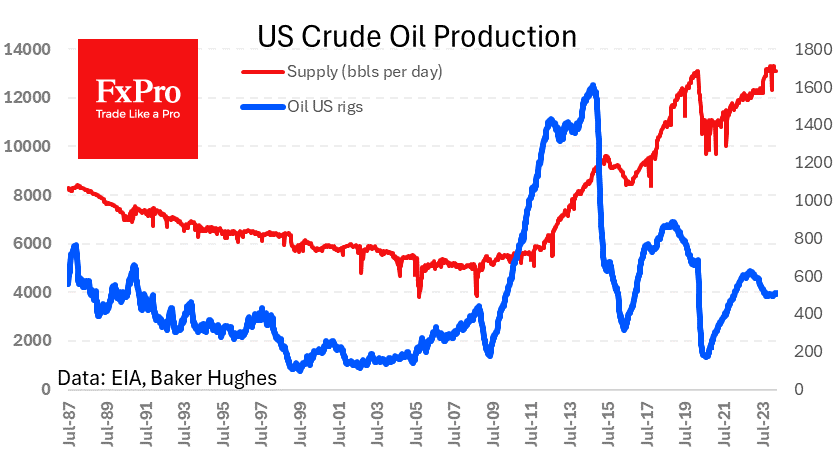Dow Jones starts to dominate over Nasdaq
May 11, 2021 @ 14:35 +03:00
There is a new momentum of pressure on technology stocks in the markets, which showed up in a 2.5% drop of the Nasdaq on Monday. Meanwhile, Dow Jones Industrial Average lost just 0.1% over the same period.
The pressure on the Dow has intensified after it set an all-time high above 35500. Major players were actively selling off stocks near the end of the New York trading session, and this was the theme of the start of Tuesday’s trading day.

This morning, the Nasdaq100 fell another 0.8% to 13200 at its lowest level in six weeks and below its 50-day moving average. This is a significant line for short-term market dynamics. In early March, a dip under this line triggered a three-day 7% sell-off.
The continuing decline of Nasdaq puts the support of the 200-day MA in the forefront, which is now near 12500 and 5.3% below the current level. Last seen in March 2020, a failure there could lead to a sharp intensification of the sell-off, and the markets could start a whole other part of the market cycle. It looks like a possible but adverse scenario.
As in the last 12 months, the chances are much higher that the Nasdaq could start to receive buying after a dive from the recent highs. This is because the fundamentals for growth are still in place, such as an economic recovery with government stimulus and ultra-soft monetary policy.

Looking more broadly, we see a clear rotation out of the high-tech sector stocks, which have been booming over the previous 12 months, into the less expensive securities in the Dow Jones, which have higher dividend yields and sustainable business, i.e. they are less vulnerable in a period of elevated inflation and yields.
Short-term, a more than 2.5% plunge of the Nasdaq 100 over the day and the development of its decline can overcome the bullish momentum also in the Dow Jones and trigger a correction there. So far, the longer-term view suggests a continuation of the bullish trend in equities but a weaker performance of last year’s market stars and the dominance of the Dow Jones over the Nasdaq.
The FxPro Analyst Team







